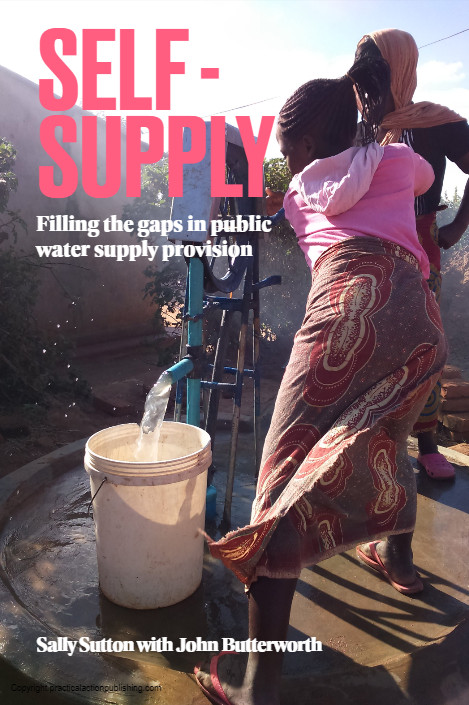Self-supply: Filling the gaps in public water supply provision
 |
livre Mar 2021 ; 362 pages
Aut. Sally Sutton & John Butterworth
Ed. Practical Action - Rugby ; Isbn: 09781780448190
Téléchargeable chez l'éditeur
Page de présentation d'un éditeur
Abstract:
This well-reasoned source book highlights the magnitude of the contribution of self-supply to urban and rural water provision world-wide, and the gains that are possible when governments recognise and support household-led supply development and up-grading. With limited public finances in low- (and many middle-) income countries, self-supply can fill gaps in public provision, especially amongst low-density rural populations. The book focuses on sub-Saharan Africa as the region with the greatest predicted shortfall in achieving the 2030 Sustainable Development Goal for water. Contents:
Part 1
1. Why public water supply can’t fill all the gaps
2. Introducing self-supply
3. The scale of rural self-supply
4. The scale of urban and peri-urban self-supply
5. Ownership and investment in self-supply in sub-Saharan Africa
6. Early stage self-supply technologies
7. Self-supply and well water quality
8. Community and self-financed supplies: complementary services in sustainability
9. Supporting self-supply acceleration
10. Conclusions and recommendations
Part 2: Self-supply case studies
1. The role of self-supply in Scotland
2. Self-supply in the Danube region
3. The shining example of domestic rainwater harvesting in Thailand
4. The National Upgraded Well Programme, Zimbabwe
5. Introducing alternative and affordable technologies for rural water supply in Tanzania
6. The pitfalls and positives of introducing support to self-supply in Zambia
Mots clefs: |
accès à l'eau (CI) (DT) (OP) (ope) , approvisionnement en eau (CI) (DT) (OP) (ope) |
Editeur/Diffuseur: |
|
Practical Action - Rugby - Royaume Uni |
En cas de lien brisé, nous le mentionner à communication@pseau.org